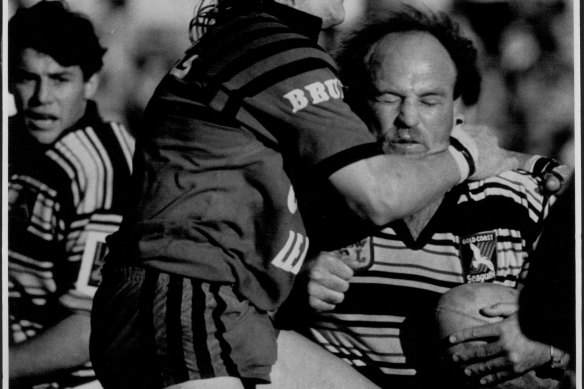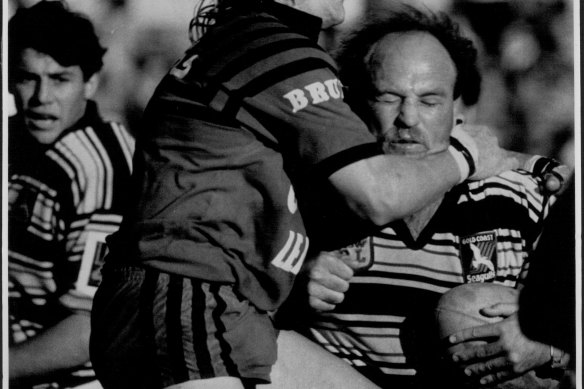All six had received treatment for at least one documented neurological disease or condition. One patient had been diagnosed with Alzheimer’s disease, another had Parkinson’s, another had Alzheimer’s and experienced seizures, and another had a diagnosed seizure disorder.
All six had dementia before their deaths.
Scientists can only diagnose CTE by taking a section of brain tissue and analysing it for a build-up of the protein tau, which can be visualised by using stains and inspecting them under a microscope.
The study, published in the journal Neuropathology and Applied Neurobiology on Wednesday, did not find this build-up in two out of the six brains, despite both having a provisional diagnosis for CTE while they were alive.
A 2022 study of more than 500 brains at the Sydney Brain Bank found less than 1 per cent of the general population had CTE. Various studies in Australia and abroad have put that figure much higher for athletes playing contact sports for many years.
Loading
Associate Professor Michael Buckland, the founding director of the Australian Sports Brain Bank at the University of Sydney’s Brain and Mind Centre, said the study of former rugby players provided “further evidence of the causal relationship between contact sports exposure and the development of CTE later in life”.
He also cautioned against diagnosing CTE while a patient was alive.
“They [the criteria for diagnosing CTE clinically] are not yet at a stage where they can be confidently used in clinical practice,” he said.
The brains of the unidentified players were some of the first to be collected through a donor program for former elite athletes, which allowed the study’s authors to get a record of the players’ medical history before their deaths.
Shepherd said the brain bank was continuing to collect brain tissue from former athletes and conduct more in-depth studies in future.

Wally Lewis is tackled during a game in August 1991.Credit: Fairfax Archives
Last year it was revealed former Canterbury player Kyle “Killer” White had severe CTE, joining former teammate Steve Folkes, Eastern Suburbs player Peter Moscatt and Queensland State of Origin player and premiership-winning coach Paul Green as former NRL players diagnosed with the condition.
Rugby league immortal Wally Lewis, who was diagnosed with dementia and suspected CTE in 2023, said he still feels lucky to have played football despite the diagnoses being not what he “was hoping to hear”.
He said he would like to see the NRL providing all the information to current players that “could be beneficial for their long and short-term future”.
“I know that the NRL have been involved in discussions with medical staff as to what they should be doing, what they probably will be doing,” he said.
A spokesperson for the NRL said they were “committed to player safety at all levels of the game” and that “as this research is only new, the NRL’s player safety committee will consider its contents”.
Rugby Australia was approached for comment.
Read More: World News | Entertainment News | Celeb News
SMH










